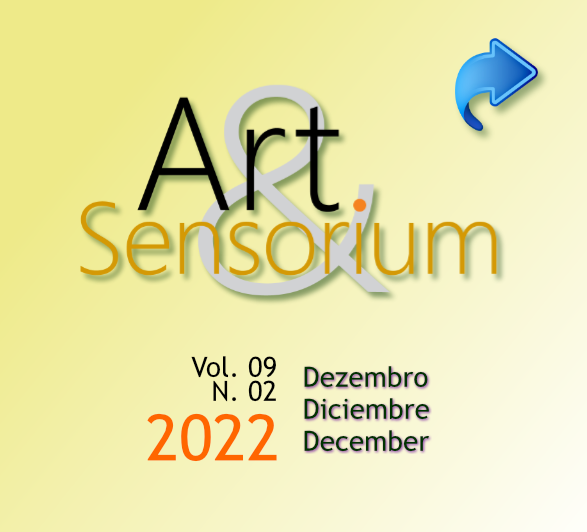THE EXISTENCE OF JOHN DEWEY'S WORK AND WHAT "SCHOOLS OF TO-MORROW" HAS TO SAY FOR ART TEACHING TODAY
DOI:
https://doi.org/10.33871/23580437.2022.9.2.106-115Abstract
This article presents an introductory study of the work “Schools of To-morrow” (1915) by John Dewey in co-authorship with Evelyn Dewey. The objective of this study is to expand the theoretical framework of research on the teaching of visual arts from one of the works of John Dewey. The text was developed from the selection of principles: adjustment, movement, experience, freedom, discipline and "learning by doing" to present some notes on the teaching of art today. As a result, we present the importance of concepts and work for new propositions, reflections on the process of appreciation, investigative observation and guided practice in art teaching. The conclusion of this study is that learning by doing follows the natural development that can be ally of the school in the articulation of knowledge in connection with life.
Downloads
Downloads
Published
Issue
Section
License
Copyright (c) 2022 International Interdisciplinary Journal of Visual Arts - Art&Sensorium

This work is licensed under a Creative Commons Attribution 3.0 Unported License.
Authors who publish with this journal agree to the following terms:- Authors retain copyright and grant the journal right of first publication with the work simultaneously licensed under a Creative Commons Attribution License that allows others to share the work with an acknowledgement of the work's authorship and initial publication in this journal.
- Authors are able to enter into separate, additional contractual arrangements for the non-exclusive distribution of the journal's published version of the work (e.g., post it to an institutional repository or publish it in a book), with an acknowledgement of its initial publication in this journal.
- Authors are permitted and encouraged to post their work online (e.g., in institutional repositories or on their website) prior to and during the submission process, as it can lead to productive exchanges, as well as earlier and greater citation of published work (See The Effect of Open Access).


